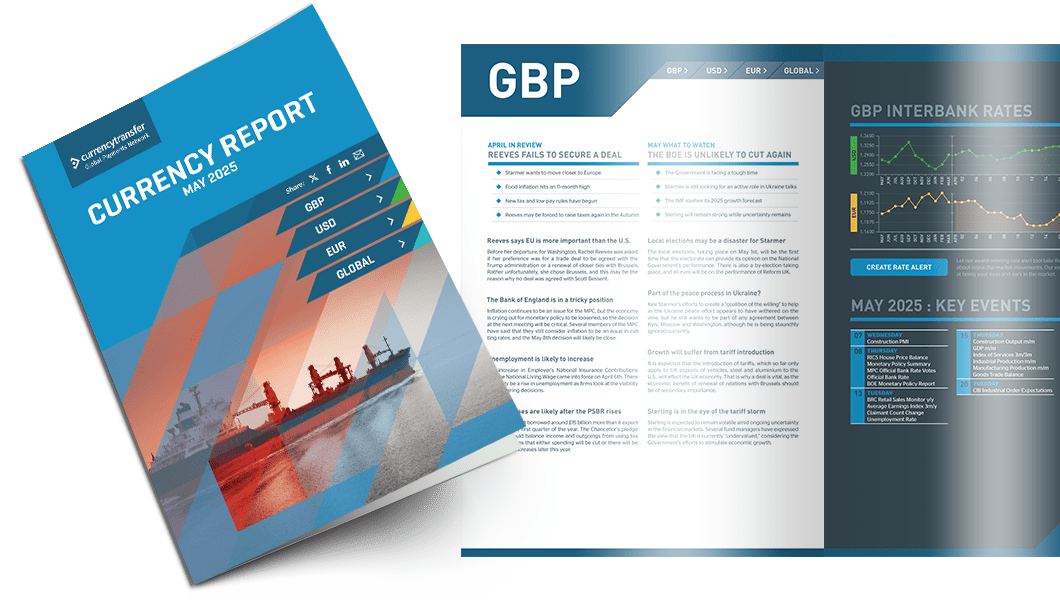
Highlights
- No growth in February but better than first reported in January
- Fed hikes by twenty-five basis points
- Unemployment continues to fall across the entire Eurozone
Fight against inflation reaching a crucial stage
There is no longer any mystery to the Bank’s actions as it set out its stall many months ago confirming that it will use tighter monetary policy as the instrument that it will use to dampen demand and by doing that reduce price pressures in the economy.
While commentators and analysts try to drive some interest in the MPC meeting, it has been obvious for a considerable time that interest rates were headed into restrictive territory. Traders have become immune to the rise in rates having any effect on the strength or otherwise of the pound, particularly as the tightening of policy has been a common theme throughout the G7 since the middle of last year.
However, following the Fed’s rate hike and somewhat dovish statement on future actions we may see some differential develop in Central Bank actions.
While journalists continue to present theories as fact, based on their own interpretation of the data, it now seems likely that rates have reached the level that is considered optimum.
Therefore, any more than one hike may have a greater effect on economic activity as small and medium businesses are left with no choice but to rein in investment plans they were considering for this year as the interest on their working capital facilities precludes any consideration of entering into longer term capital purchases of plant or machinery.
Next Thursday, Andrew Bailey will be faced with a similar dilemma to that Jerome Powell faced yesterday. How much advance guidance does he provide to the market of the Bank’s intentions going forward, particularly when the delicate balance between inflation and growth.
Yesterday, the pound ended stronger versus the dollar as the market reacted to expectations that the Fed would pause its policy of rate hikes. It rose to a high of 1.2569, closing at 1.2563. Against the euro it remains in a relatively narrow range. Having tested the water above 1.14 recently it has settled back somewhat and closed yesterday at 1.1356.

Read our latest currency report
Most impactful events planned this month and how they could impact your business
Fed giving the economy a chance to catch up
What Jerome Powell failed to mention was that this was the most dovish course the Committee could take given that the most crucial piece of data for economic activity in April won’t be published until tomorrow.
The latest numbers on job creation will be released tomorrow, and they are expected to see a fall from the data for March.
The first quarter proved to be far stronger than the FOC had expected with January seeing more than 500k new jobs created. This turned out to be an anomaly as the figures have settled back into their trend of +/- 200k since then.
Commentators and market analysts have almost given up trying to predict the data since it is clear that their analysis is little more than guesstimates.
In his press conference following the meeting, Jerome Powell used the standard fallback when wanting to hint at a pause in rate hikes by saying that any further rate hikes would be data-driven.
He said much the same thing following December’s meeting, but no one found any reason to challenge him.
Having embarked on an aggressive programme of rate hikes as inflation rose, and remained above the Central Bank’s of 2% it was generally felt that with rates now at a full one per cent higher than had been generally expected to be their highest in this period, that Powell would signal a pause.
Rates are now at their highest for sixteen years and Powell believes that tighter monetary conditions are beginning to weigh on business and household budgets while their full impact remains uncertain.
The twenty-five basis point was both the most and the least that could have been expected, given the uncertainty that remains over the pace of the fall in inflation which, now that interest rates are clearly in a restrictive phase, and the economy is struggling for growth.
The dollar index suffered as the Chairman’s remarks were considered the most dovish that he could bring himself to utter. It fell to a low of 101.08, closing at 101.27.
Effect on global economy potentially devastating
She went on to say that if the Federal Government were to shut down for lack of funds to pay even the most basic things such as staff wages, it would prove devastating to the global economy.
Data for pan-Eurozone unemployment was released yesterday, and it showed that jobless numbers across the entire region fell to an all-time low of 6.5% of the workforce.
While falling numbers of jobless citizens is obviously welcome it creates inflationary pressures in the economy.
Today’s meeting of the ECB Governing Council will continue to address the stubbornly high rate of inflation in the region as a whole. The differences of opinion over what constitutes high inflation were perfectly illustrated by the release of data from Greece recently.
The current star of the Eurozone, which has shown that cutting public spending and reducing its debt to GDP ratio to more manageable levels, is the best path to financial stability saw its inflation rate fall to 4.5% in March. This is the fourth-lowest rate in the entire region, but in terms of ECB members it is still considered uncomfortably high.
Having been a little late to the party, the ECB continued to play catch up. While the Fed signalled a pause in its programme of rate hikes yesterday and the Bank of England is considered likely to do that same next week, the ECB will probably continue to raise rates until the end of the present quarter and possibly even longer.
While this will benefit the currency in the short to medium term, it is likely that the economy will continue to suffer. Growth is predicted to be 0.8% for the whole of this year, which doesn’t allow too much wiggle room should there be any unforeseen shocks. While the ECB cannot cater for anything unexpected, some dovish Central Bankers are advising caution as rates approach restrictive territory.
The euro rose to a high of 1.1091 and closed at 1.1051 yesterday, as the Fed signalled a pause in its own rate increases. There is a significant line of resistance a little above the current level which may be tested today if the ECB remains hawkish on interest rates.
Have a great day!

Exchange rate movements:
03 May - 04 May 2023
Click on a currency pair to set up a rate alert
Alan Hill
Alan has been involved in the FX market for more than 25 years and brings a wealth of experience to his content. His knowledge has been gained while trading through some of the most volatile periods of recent history. His commentary relies on an understanding of past events and how they will affect future market performance.